If you’re diving into the world of 2JZ engines, you’ve probably heard a lot about boost control. But what does it really mean? Imagine your turbocharger as a wild horse. Without a proper rein, it can either run away or stumble. Boost control is that rein — it tames the turbo, making sure it delivers power smoothly and safely. Without it, your engine might produce power spikes that feel thrilling but can cause serious damage under the hood.
The 2JZ engine is legendary for its strength and tuning potential, but it’s also sensitive to how boost is managed. Too much boost without control? You’re flirting with disaster. Too little? You’re leaving power on the table. The magic lies in finding that sweet spot where performance and reliability coexist. Boost control systems help you hit that balance by regulating the pressure your turbo generates, ensuring your engine breathes just right.
Think of boost control as the brain behind your turbo’s lungs. It decides when to let more air in and when to hold back. This regulation not only maximizes horsepower but also protects critical engine components like pistons and head gaskets. It’s like having a smart coach who knows when to push you hard and when to ease off to avoid injury.
Whether you’re tearing up the streets or chasing lap times on the track, a solid boost management strategy is essential. It’s not just about power; it’s about consistency. A well-managed boost system means your 2JZ responds predictably, giving you confidence every time you hit the throttle.
In short, boost control and management systems are the unsung heroes of 2JZ tuning. They transform raw turbo potential into usable, reliable power. Without them, you’re driving blind, hoping for the best. With them, you’re in the driver’s seat — fully in control, fully aware, and fully ready to unleash what the 2JZ can truly do.
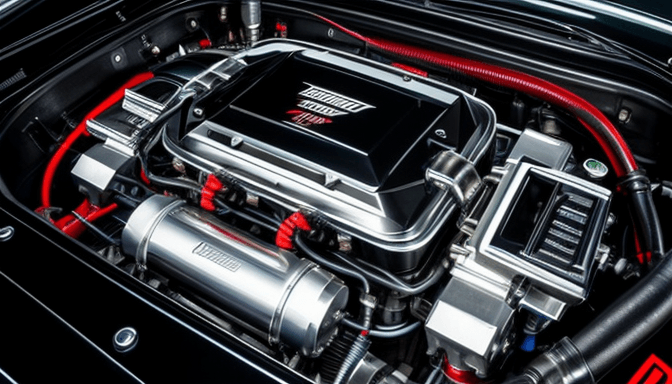
What Is Boost Control and Why It Matters for 2JZ Tuning
Imagine you’re trying to squeeze every last drop of power out of your 2JZ engine. Turbochargers are the magic wands that push more air into the engine, creating that thrilling boost in power. But here’s the catch: without proper boost control, that power can quickly turn into trouble. Boost control is essentially the system that manages how much pressure the turbocharger pumps into your engine. It’s like the throttle for your turbo’s power delivery—too little boost, and you’re leaving performance on the table; too much, and you risk blowing up expensive engine parts.
Why does this matter so much for the 2JZ? Well, this engine is legendary for handling huge power numbers, but it’s also sensitive to pressure spikes and inconsistencies. Without precise boost control, you could end up with boost creep—where pressure climbs beyond your set limit—or sudden boost spikes that slam the engine with more force than it can handle. Think of it like trying to ride a wild horse without reins; you need that control to stay safe and get the most out of the ride.
Boost control isn’t just about preventing damage. It also plays a huge role in tuning. When you’re dialing in your 2JZ for street or track use, consistent boost means predictable power delivery. This makes your car easier to drive and tune, giving you confidence in every corner and every straightaway. Plus, it helps maintain engine reliability over the long haul, so you’re not just chasing peak numbers but building a setup that lasts.
In short, boost control is the unsung hero of 2JZ tuning. It keeps the power smooth, the engine safe, and the driving experience sharp. Without it, you’re gambling with your build—and nobody wants to lose that bet.
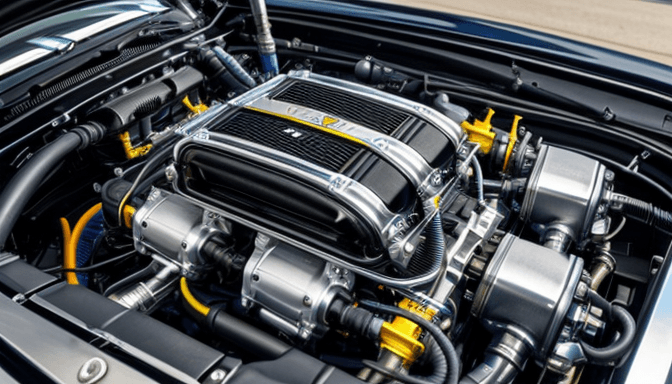
Manual vs Electronic Boost Controllers: Which to Choose
When it comes to controlling boost on your 2JZ engine, the choice between manual and electronic boost controllers can feel like a fork in the road. Each has its own personality, its own set of strengths, and quirks. Imagine manual controllers as the old-school, hands-on approach—simple, reliable, and direct. You turn a knob or adjust a screw, and that’s it. No fancy electronics, no complicated wiring. It’s like riding a classic bike: you feel every bump, every twist, and you’re in control the whole time.
On the flip side, electronic boost controllers are the modern marvels. They bring precision and flexibility to the table, letting you dial in boost levels on the fly with the push of a button or even automatically through your ECU. Think of them as the smart bike with all the gadgets—smooth, responsive, and adaptable to different conditions without you lifting a finger. But with that convenience comes complexity. Installation can be a bit of a headache, and tuning requires some know-how or a good tuner on speed dial.
Now, you might be wondering, “Which one fits my 2JZ setup best?” It boils down to your goals and how involved you want to be. If you’re a DIY enthusiast who loves simplicity and doesn’t mind tweaking settings manually, a manual boost controller is a solid choice. It’s straightforward and less likely to fail because of electrical glitches. Plus, it’s usually cheaper and easier to fix on the spot.
However, if you’re chasing consistent performance, especially on the track or in variable driving conditions, an electronic boost controller shines. It can maintain steady boost levels, prevent spikes, and even integrate with your engine management system for smarter tuning. This means less guesswork and more confidence pushing your 2JZ to its limits.
Here’s a quick snapshot of the key differences:
| Feature | Manual Boost Controller | Electronic Boost Controller |
|---|---|---|
| Ease of Installation | Simple, minimal wiring | Complex, requires wiring and tuning |
| Adjustability | Manual adjustment only | On-the-fly, programmable |
| Precision | Good but less consistent | Highly precise and stable |
| Reliability | Very reliable, less prone to failure | Dependent on electronics, potential for glitches |
| Cost | Lower | Higher |
In essence, if you like the idea of being hands-on and value simplicity, stick with manual. If you want precision and adaptability, electronic is your friend. Either way, understanding how each works will help you harness your 2JZ’s turbo potential without surprises. Remember, the right boost controller is the one that fits your style, your budget, and your tuning ambitions perfectly.
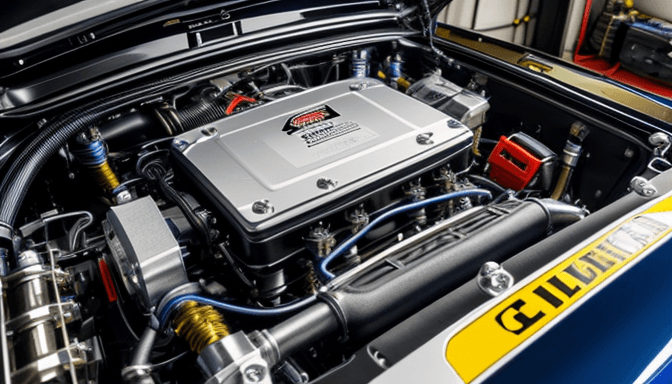
How to Install a 3-Port or 4-Port Solenoid on the 2JZ
Installing a 3-port or 4-port solenoid on your 2JZ engine might sound intimidating at first, but once you break it down, it’s pretty straightforward. Think of it like adding a new gadget to your car’s turbo system—a gadget that lets you fine-tune how your boost behaves. The key is to understand the role each port plays and how to connect everything so your boost control runs smoothly.
First off, let’s talk about the 3-port solenoid. It’s the simpler of the two and works by regulating pressure going to the wastegate actuator. Imagine it as a traffic controller deciding how much boost pressure gets through. One port connects to the boost source, another to the wastegate actuator, and the third vents excess pressure. This setup lets you adjust boost levels by controlling how much pressure the wastegate sees.
Now, the 4-port solenoid adds a bit more complexity but also more control. It has an extra port that allows you to vent pressure more precisely, which can help with faster spool times and tighter boost control. You’ll see that two ports connect to the wastegate actuator (one for pressure, one for venting), one to the boost source, and the last one vents to atmosphere. This setup is a favorite for those who want sharper boost response on the 2JZ.
When it comes to installation, start by locating your wastegate actuator and the boost source line—usually the compressor housing or a boost reference point on the intake manifold. Make sure your solenoid is mounted securely away from heat and vibration, as these can affect its lifespan. Wiring the solenoid means connecting it to your boost controller or standalone ECU—pay close attention to the polarity and use proper connectors to avoid shorts or loose connections.
One common pitfall is mixing up the ports or using the wrong hose sizes. Always double-check the solenoid’s markings and consult the manual. Using vacuum-rated hoses is a must; anything else can collapse under pressure and mess up your boost control. Also, keep hose runs short and avoid sharp bends to maintain consistent pressure readings.
Here’s a quick overview of the hose routing for both solenoids:
| Solenoid Type | Port 1 | Port 2 | Port 3 | Port 4 (4-Port Only) |
|---|---|---|---|---|
| 3-Port | Boost Source | Wastegate Actuator | Vent to Atmosphere | N/A |
| 4-Port | Boost Source | Wastegate Actuator Pressure | Wastegate Actuator Vent | Vent to Atmosphere |
Finally, after installation, don’t just jump into high boost. Take it slow, test your setup, and watch how your boost behaves. Tune carefully and make adjustments as needed. The beauty of these solenoids is how much control they give you once dialed in. It’s like having a volume knob for your turbo—turn it up, but know when to ease off.
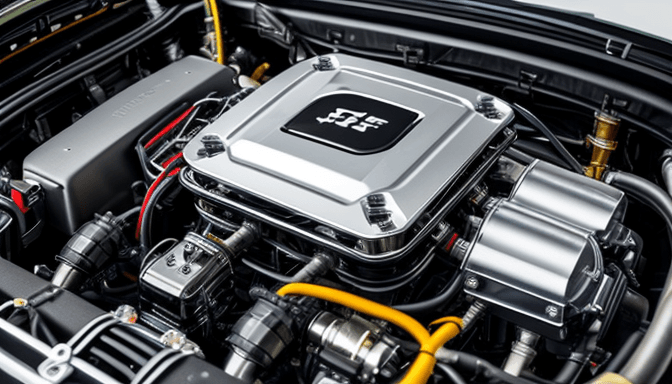
Top Boost Controllers for Street and Track Applications
Picking the right boost controller for your 2JZ engine is like choosing the perfect pair of shoes—you want something that fits your style, feels comfortable, and performs well no matter the terrain. Whether you’re cruising the streets or tearing up the track, the boost controller is the silent hero that keeps your turbo in check and your engine happy. You might think all boost controllers do the same job, but the truth is, the differences can make or break your driving experience.
On the street, reliability and ease of use often top the list. You want a controller that responds smoothly without constant tweaking. Electronic boost controllers shine here because they offer precise control and can adapt to changing conditions with just a few button presses. Imagine having a controller that adjusts boost on the fly, giving you that perfect blend of power and safety during your daily drive. Brands like GFB and Turbsomart offer models that balance user-friendliness with solid performance, making them favorites among street tuners.
Now, hit the track, and the game changes. Boost control becomes a high-stakes balancing act. You need a controller that reacts instantly, handles rapid changes, and lets you dial in aggressive boost levels without hesitation. Here, some tuners swear by the precision of HKS or AEM controllers, known for their robust build and advanced features. These units often come with customizable maps, data logging, and even boost-by-gear options, giving you the edge when every millisecond counts.
But it’s not just about the brand or features; installation and integration matter too. A controller that plays nice with your existing setup—especially if you’re running a standalone ECU—can save you hours of frustration. Plus, some controllers offer modular designs, letting you upgrade or swap components without starting from scratch.
Here’s a quick look at what sets the top boost controllers apart:
| Controller | Best For | Key Features | Why It Stands Out |
|---|---|---|---|
| GFB | Street & Daily Use | Simple interface, reliable solenoid | Easy to tune, great for beginners |
| Turbosmart | Street & Moderate Track | Durable design, adjustable boost levels | Good balance of price and performance |
| HKS | Track & High-Performance | Advanced mapping, quick response | Trusted by professional racers |
| AEM | Track & Custom Builds | Boost-by-gear, data logging | Highly customizable and precise |
At the end of the day, your choice boils down to how you drive and what you expect from your 2JZ. If you’re a weekend warrior who loves smooth streets and occasional spirited runs, a straightforward electronic controller like those from GFB or Turbosmart might be your best bet. But if you’re chasing lap times or pushing your engine to the edge, investing in a controller with advanced features from HKS or AEM could be worth every penny.
Remember, boost control isn’t just about cranking up power—it’s about keeping your engine safe and responsive. So, take your time, weigh your options, and pick a controller that feels right for your ride. After all, the best boost controller is the one that lets your 2JZ breathe easy and roar loud exactly when you want it to.
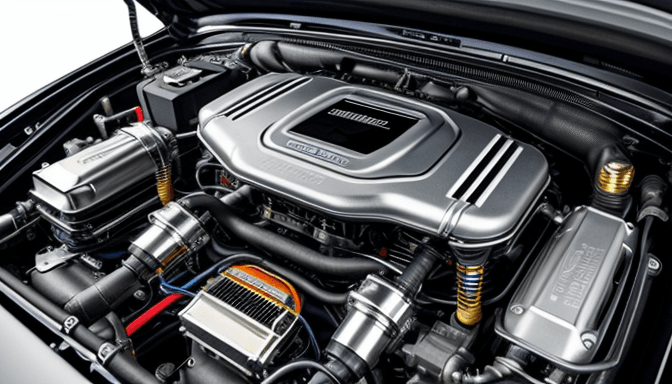
Managing Boost Creep and Spike: Causes and Fixes
Boost creep and boost spike — ever heard these terms thrown around in 2JZ tuning circles? They’re like those sneaky little gremlins that mess with your turbo’s smooth power delivery. Imagine you’re cruising, feeling that turbo kick in just right, then suddenly, the boost jumps beyond your set limit or climbs slowly without control. That’s boost creep and spike playing tricks. But why does this happen, and how do you tame these wild boost behaviors?
First, let’s break down what’s going on under the hood. Boost creep happens when the wastegate can’t fully bypass exhaust gases around the turbine. Instead of venting enough pressure, the turbo keeps spinning faster, pushing boost higher than intended. It’s like trying to stop a speeding train with a paper brake. This often happens if the wastegate is too small, the actuator is weak, or the boost controller isn’t doing its job properly. On the other hand, boost spike is that sudden, sharp jump in boost pressure — like a surprise punch. It usually occurs when the boost controller or solenoid reacts too slowly or erratically, letting the turbo surge before cutting back.
So, how do you fix these headaches? Start with the wastegate. If you’re running a stock internal wastegate on a heavily modified 2JZ, you might be fighting a losing battle. Upgrading to a larger or external wastegate gives you better control over exhaust flow, preventing boost creep by venting excess pressure more efficiently. Think of it as giving your turbo a bigger exit door to breathe through.
Next up, the boost controller itself. Manual controllers can be a bit blunt instruments — they set a static pressure but can’t react to sudden changes. Electronic boost controllers, especially those with a 3-port or 4-port solenoid, offer finer control, adjusting boost on the fly and smoothing out spikes. But even the best controller needs proper installation and tuning. Wiring errors or poor solenoid placement can cause delayed signals, letting boost spike sneak in.
Another trick is making sure your boost control lines are clean and free of leaks. A tiny vacuum leak or kinked hose can confuse the controller, causing unpredictable boost behavior. It’s like trying to whisper through a megaphone — the message gets lost or distorted.
Lastly, don’t overlook the role of your engine management system. Integrating your boost controller with a standalone ECU lets you program precise boost targets and safety limits. This setup can catch boost spikes before they become a problem, protecting your engine from damage while keeping power delivery smooth.
In short, managing boost creep and spike is about balance — the right wastegate size, a responsive boost controller, clean lines, and smart tuning. Tuning your 2JZ’s boost isn’t just about pushing numbers; it’s about keeping your engine happy and healthy, so you get that thrilling turbo punch without the drama.
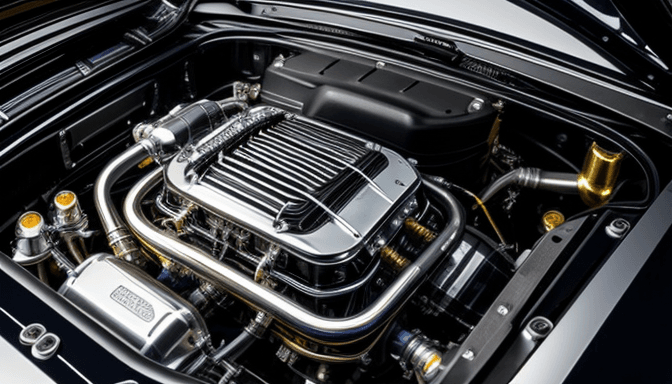
Wastegates: Internal vs External and When to Upgrade
When it comes to controlling boost on your 2JZ engine, the wastegate is the unsung hero. It’s the valve that decides when to let off some of that turbo pressure, preventing your engine from going overboard. But here’s the catch: not all wastegates are created equal. You’ve got internal and external wastegates, and knowing the difference can make or break your boost control game.
Internal wastegates are built right into the turbo housing. They’re compact, simple, and usually good enough for mild to moderate setups. Think of them as the stock brakes on a car—they get the job done without fuss. But when you start pushing for higher boost levels or want more precise control, internal wastegates can struggle. They’re limited by their size and the heat they endure inside the turbo, which can lead to boost creep or inconsistent pressure relief.
External wastegates, on the other hand, are separate units mounted outside the turbo. This design lets them handle much higher boost pressures and heat loads. Imagine upgrading from your basic brakes to a high-performance racing system—that’s the kind of control and reliability external wastegates bring. They open and close more precisely, giving you tighter boost control, which is crucial when tuning for serious power or track use.
So, when should you think about upgrading? If you’re running a stock or mildly tuned 2JZ, an internal wastegate is usually fine. But once you start chasing big numbers—say, above 15 psi—or notice your boost fluctuating wildly, it’s time to consider an external wastegate. Also, if you’re into track days or aggressive driving, external wastegates offer the durability and consistency you need.
Here’s a quick rundown in case you want to weigh your options:
| Feature | Internal Wastegate | External Wastegate |
|---|---|---|
| Location | Inside turbo housing | Mounted externally |
| Boost Control Precision | Moderate | High |
| Heat Handling | Limited | Better |
| Best For | Stock to mild builds | High boost, aggressive tuning |
| Cost | Lower | Higher |
Upgrading isn’t just about slapping on a new part—it’s about knowing your goals and how your 2JZ responds. If you want smooth, consistent power without surprises, an external wastegate paired with a good boost controller can be a game-changer. Just remember, upgrading also means tuning your setup carefully to avoid any nasty boost spikes or engine stress.
In the end, the choice boils down to your build and how you drive. Internal wastegates keep things simple and cost-effective, but if you’re serious about pushing your 2JZ to its limits, an external wastegate is a smart investment. It’s like choosing the right tool for the job—pick wisely, and your engine will thank you.
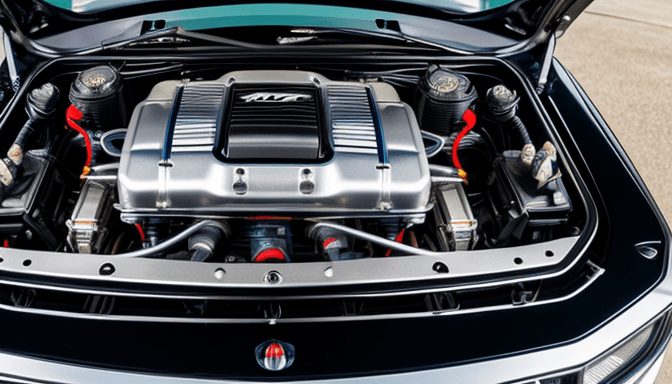
Integrating Boost Control with Your Standalone ECU
When it comes to fine-tuning your 2JZ engine, integrating boost control with your standalone ECU isn’t just a nice-to-have—it’s a game of precision. Imagine your ECU as the brain, and the boost controller as the muscle. If they don’t communicate well, you’re left with guesswork and inconsistent power delivery. So, how do you make these two work in harmony? It’s all about syncing the signals and letting your ECU call the shots on boost levels.
Standalone ECUs give you the flexibility to program boost targets based on RPM, throttle position, and even gear selection. This means you can dial in *exact* boost pressures for different driving conditions. For example, a gentle boost for cruising and a more aggressive spike when you’re pushing hard on the track. The secret sauce? Using a boost control solenoid that your ECU can pulse to adjust boost dynamically, rather than relying on a static manual controller.
Wiring the boost control solenoid to your ECU might sound intimidating, but it’s straightforward once you understand the basics. Your ECU typically has a dedicated output channel for boost control. When the ECU pulses this output, it modulates the solenoid, which in turn regulates the wastegate’s pressure signal. This setup allows for real-time boost adjustments, keeping your engine safe and responsive.
One common pitfall is neglecting to calibrate the boost control tables in your ECU after installation. It’s like having a high-performance car with mismatched tires—everything feels off. Calibration involves tuning the duty cycle of the solenoid at various RPMs and load points to achieve the desired boost curve. Without this, you risk boost spikes or lag, both of which can hurt performance and reliability.
Another tip? Use your ECU’s data logging feature to monitor boost pressures, wastegate duty cycles, and other critical parameters. This feedback loop is invaluable. It’s like having a coach watching your every move, ready to give advice to improve your run. Over time, this data helps you refine your boost control strategy, making your 2JZ not just powerful, but *smooth* and predictable.
In short, integrating boost control with your standalone ECU turns guesswork into science. It’s the difference between a wild, unpredictable ride and a finely tuned machine that responds exactly how you want. And trust me, once you get this setup dialed in, every throttle stab feels like a well-rehearsed symphony—powerful, precise, and utterly satisfying.
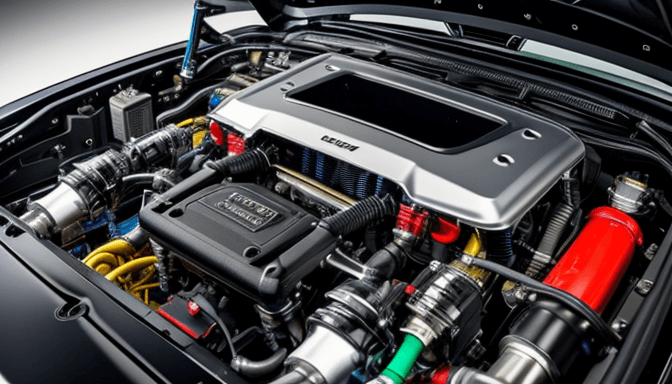
Popular Brands: GFB, Turbosmart, HKS, AEM
When it comes to boosting your 2JZ engine’s performance, choosing the right brand for your boost control setup isn’t just a minor detail—it’s a game of trust. You want parts that don’t just promise power but deliver consistency and durability. That’s where brands like GFB, Turbosmart, HKS, and AEM come into play. Each has carved out a solid reputation among enthusiasts, but they bring different flavors to the table.
GFB (Go Fast Bits) is often the go-to for those who crave simplicity without sacrificing quality. Their products tend to be user-friendly, making them perfect if you’re just dipping your toes into boost control or prefer a straightforward setup. What’s cool about GFB is how they balance affordability and reliability, so you’re not breaking the bank but still getting gear that holds up under pressure. If you’ve ever fiddled with their boost controllers or wastegates, you know they feel solid and responsive—no lag, no guesswork.
On the other hand, Turbosmart is like the Swiss Army knife for tuners who want versatility and precision. Their lineup covers everything from basic manual controllers to advanced electronic solenoids that integrate seamlessly with your ECU. Turbosmart gear often shines in high-performance builds where every psi counts. What sets them apart is their engineering finesse—they’re designed to handle serious heat and pressure, which means fewer headaches when pushing your 2JZ hard on the track.
Then there’s HKS, a brand that almost needs no introduction in the JDM tuning world. Their boost controllers and wastegates are legendary for durability and fine-tuned performance. If you’re aiming for a setup that’s been tested on racetracks and in countless street builds, HKS is a solid bet. Their products often come with a bit of a premium price tag, but you’re paying for that extra layer of engineering polish and reliability. Plus, their boost controllers offer smooth, predictable control that’s hard to beat when dialing in your tune.
AEM brings a slightly different vibe—think of them as the tech-savvy option. Their boost control solutions often integrate well with standalone ECUs and other engine management tools, making them a favorite for those who want a fully programmable setup. AEM’s controllers tend to appeal to tuners who love tweaking every detail, offering precise control over boost curves and safety limits. If you enjoy the process of fine-tuning and want your boost control to respond exactly how you want, AEM is definitely worth a look.
Here’s a quick glance to break it down:
| Brand | Strengths | Best For | Price Range |
|---|---|---|---|
| GFB | Simple, reliable, affordable | Beginners, street builds | Low to Mid |
| Turbosmart | Versatile, durable, high precision | Track and high-performance builds | Mid to High |
| HKS | Legendary reliability, smooth control | Serious street and track tuning | High |
| AEM | Highly programmable, tech-friendly | Advanced tuners, standalone ECU users | Mid to High |
In the end, the best brand depends on your goals and how hands-on you want to be. Are you looking for something that just works out of the box? GFB might be your buddy. Want to push your 2JZ to the edge with fine control? Turbosmart or AEM could be your ticket. And if you want that tried-and-true Japanese engineering pedigree, HKS stands tall. Whichever you pick, investing in quality boost control gear is like giving your engine a safety net—protecting it while squeezing out every bit of power.
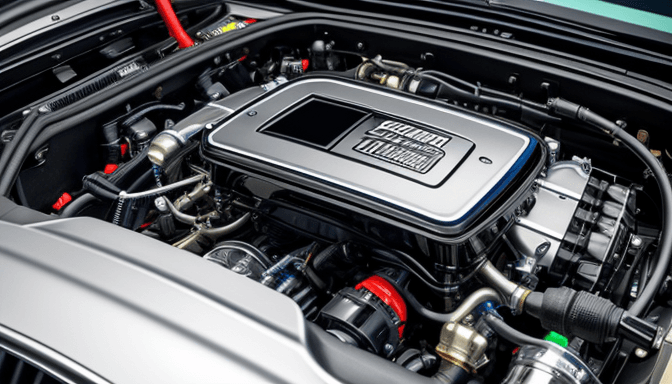
Safe Boost Targets for Stock and Built 2JZ Engines
When it comes to the legendary 2JZ engine, setting the right boost pressure is like walking a tightrope—you want to push for power but without risking a catastrophic fall. The truth is, not all 2JZ engines are created equal, so a one-size-fits-all boost number doesn’t exist. Stock 2JZ engines, with their factory internals, have limits that you simply can’t ignore. Running too much boost on a stock setup is like asking a marathon runner to sprint a 100-meter dash non-stop—it’s just not built for that kind of stress.
For a stock 2JZ-GTE, keeping boost around 7 to 9 psi is generally considered safe. This range allows you to enjoy a noticeable power increase without pushing the engine beyond its comfort zone. Go higher without proper supporting mods, and you risk things like ring land failure, blown head gaskets, or worse. It might sound cautious, but trust me—your wallet and your engine will thank you later.
Now, if you’ve built your 2JZ with forged pistons, upgraded rods, and a beefed-up fuel system, the game changes completely. This is where the engine can handle more aggressive boost levels, often between 15 to 25 psi, depending on the exact build and tuning finesse. Think of it like upgrading from a family sedan to a race car—you can push harder, but only if everything else is dialed in perfectly.
Here’s a quick breakdown of safe boost targets based on build type:
| Engine Build | Safe Boost Range (psi) | Notes |
|---|---|---|
| Stock 2JZ-GTE | 7-9 | Factory internals, moderate power gains |
| Basic Bolt-Ons (exhaust, intake) | 9-12 | Still mostly stock internals, slight tuning needed |
| Built Engine (forged pistons, rods) | 15-25 | Supports higher boost, requires precise tuning |
| Race-Level Build | 25+ | Extensive upgrades, high-octane fuel, professional tuning |
But here’s the catch—boost pressure alone doesn’t tell the whole story. Timing, air-fuel ratios, and ignition control all play huge roles in how safely you can run your boost. Even if you hit the “safe” psi, poor tuning can turn that number into a ticking time bomb. Remember my buddy who cranked his stock 2JZ to 12 psi without adjusting fuel delivery? Let’s just say the engine didn’t last a week.
In essence, safe boost targets are a guideline, not a guarantee. Always pair your boost goals with proper tuning and supporting mods. Think of boost like a powerful tool—handle it with respect, and it’ll reward you with thrilling performance. Abuse it, and you’re asking for trouble. So, whether you’re cruising the streets or tearing up the track, keep your boost targets realistic and your engine happy.
Frequently Asked Questions
- What exactly is boost control and why is it so important for the 2JZ engine?Boost control is like the throttle for your turbocharger—it regulates how much compressed air the engine breathes in. For the 2JZ, precise boost management isn’t just about squeezing out more horsepower; it’s about protecting the engine from dangerous pressure spikes that can cause serious damage. Think of it as the difference between a smooth highway and a wild roller coaster ride for your engine.
- Should I go for a manual or electronic boost controller on my 2JZ?It depends on how hands-on you want to be. Manual controllers are simple, reliable, and great if you like tweaking settings on the fly without fuss. Electronic controllers, on the other hand, offer precision and adaptability, letting your ECU fine-tune boost levels based on driving conditions. If you want a “set it and forget it” experience with smarter control, electronic is your best bet.
- What’s the difference between a 3-port and 4-port boost control solenoid, and which should I install?Both solenoids help regulate boost by controlling air pressure to the wastegate, but a 4-port solenoid offers finer control with an extra valve, making it ideal for advanced tuning setups. Installing either requires careful wiring and placement—think of it like plumbing for your engine’s airflow. If you’re aiming for precision and plan to integrate with a standalone ECU, the 4-port is usually worth the extra effort.
- How can I prevent boost creep and spikes on my 2JZ?Boost creep and spikes are like surprise fireworks in your intake system—exciting but risky. They usually happen because the wastegate can’t vent enough pressure or the boost controller isn’t calibrated properly. Fixes include upgrading to an external wastegate, ensuring all hoses are tight and leak-free, and fine-tuning your boost controller settings. Regular maintenance is key to keeping your boost steady and safe.
- When should I consider upgrading from an internal to an external wastegate?If you’re pushing your 2JZ beyond stock boost levels or chasing serious track performance, an external wastegate is a game-changer. Internal wastegates are fine for moderate setups but can struggle with high boost and fast spool times. External units offer better durability and more precise control, making them perfect for those “go big or go home” builds.
- Can I integrate my boost controller with a standalone ECU, and why would I want to?Absolutely! Integrating your boost controller with a standalone ECU lets you unlock the full potential of your 2JZ by syncing boost levels with fuel and ignition timing adjustments. It’s like having a conductor orchestrating every note for a perfect performance. This integration improves drivability, protects the engine, and makes tuning more flexible and responsive.
- Which boost controller brands are best suited for the 2JZ engine?Brands like GFB, Turbosmart, HKS, and AEM are popular choices among 2JZ enthusiasts because they combine reliability, advanced features, and solid build quality. Each brand has its strengths—GFB offers user-friendly options, Turbosmart excels in durability, HKS is known for high-performance parts, and AEM provides excellent electronic integration. Your choice depends on your budget and tuning goals.
- What are safe boost pressure targets for stock versus built 2JZ engines?For a stock 2JZ engine, keeping boost around 7-9 psi is generally safe to avoid stressing internal components. Built or forged engines can handle much higher pressures—sometimes 15 psi or more—but it’s crucial to tune carefully and monitor engine health. Think of it like running a marathon versus a sprint; the stronger your engine’s foundation, the more boost it can safely handle without blowing a gasket.